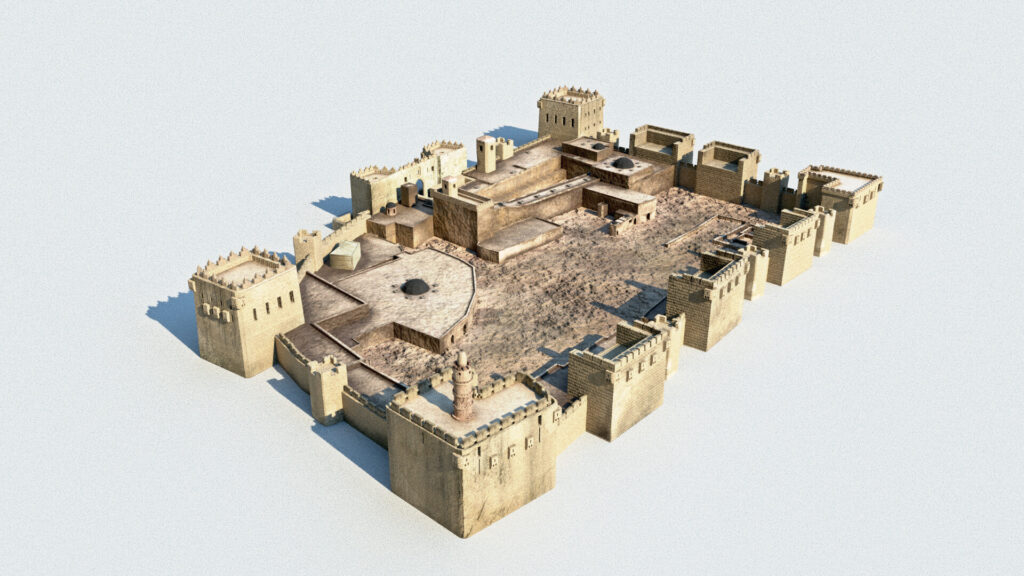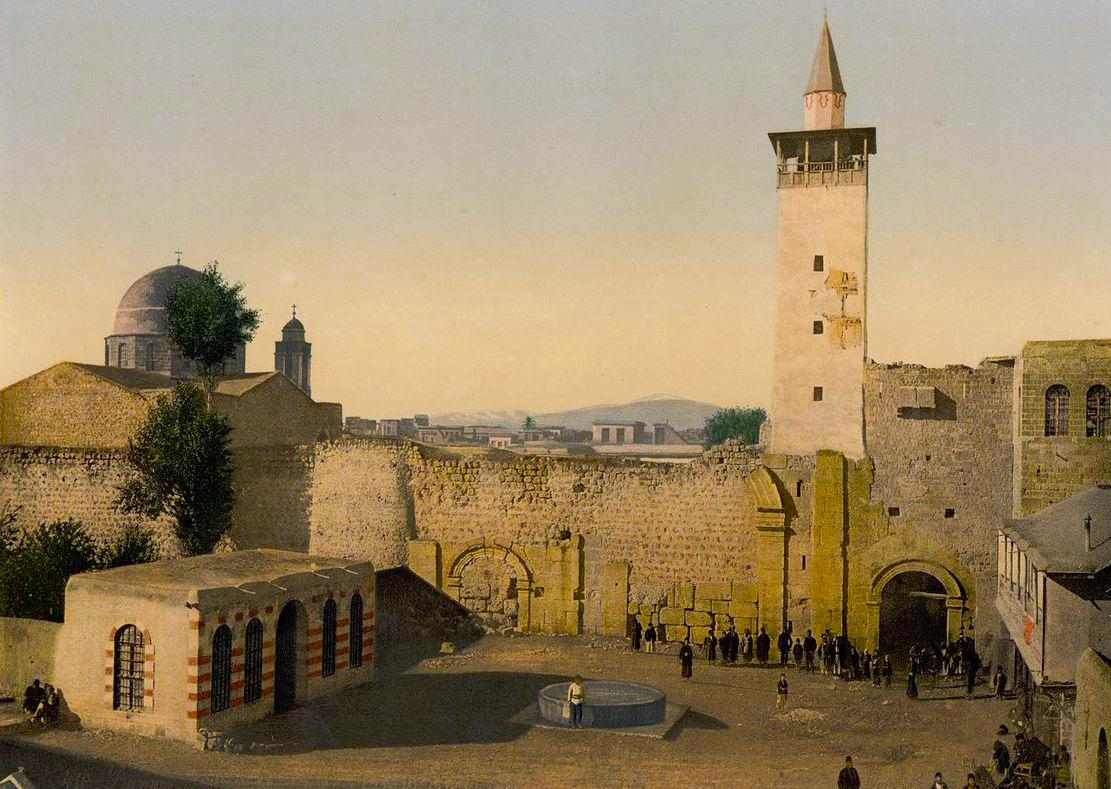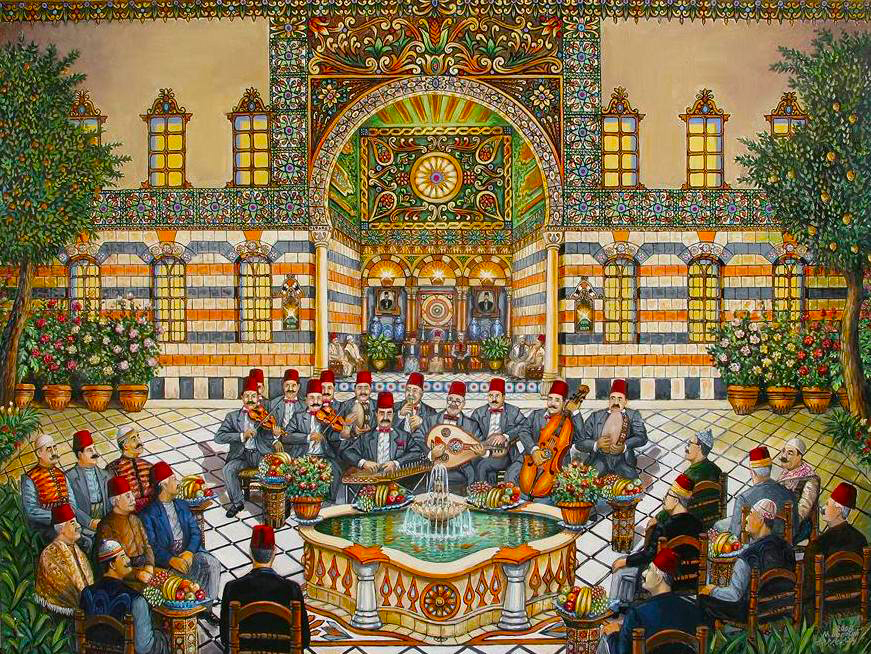Citadel of Damascus (Qala’at Dimashq): A Fortress of History and Legacy: Rising at the northwest corner of the ancient city walls, the Citadel of Damascus is one of the oldest and most formidable fortresses in the Middle East. It has watched over the city for nearly a thousand years, standing as both a military stronghold and a silent witness to Damascus’s complex and layered past. For travelers, the Citadel offers an awe-inspiring walk through medieval history, complete with stone towers, inner courtyards, and panoramic views of the Old City.
Location & Overview
Situated adjacent to Souq al-Hamidiyyeh and just a short walk from the Umayyad Mosque, the Citadel occupies a key position in the heart of Damascus. Its towering walls and rectangular layout make it an unmistakable landmark at the edge of the ancient city’s bustling core.
Local name: Qala’at Dimashq
Opening hours: Typically 9:00 am – 5:00 pm (subject to local conditions)
Entrance fee: Modest and affordable for foreign and local visitors
Recommended visit time: 1.5 to 2 hours
Guide availability: Local guides are often available at the entrance
Historical Background
Early Foundations
Although Damascus itself dates back over 10,000 years, the Citadel was first established in the Roman era as a defensive structure on the western edge of the city. However, what remains today is largely medieval Islamic architecture — particularly from the Seljuk, Ayyubid, and Mamluk periods.
The fortress gained real prominence during the Seljuk period (11th century), when ruler Toghril Beg ordered the construction of a fortified military base. It was then significantly enhanced and expanded by the Ayyubid sultan Salah ad-Din (Saladin) and his successors.
Ayyubid Reinforcements
One of the most important upgrades occurred under Saladin’s son, al-Malik al-Zahir Ghazi, in the late 12th century. He modernized the structure by adding 13 towers, thickened the walls, and reinforced the gates. These improvements were intended to protect the city from Crusader invasions and internal power struggles.
Over the centuries, the Citadel has served as a military base, political prison, and royal residence — often changing hands during successive wars, invasions, and dynastic shifts.
Architectural Features

The Citadel’s architectural complexity reflects the turbulent history of Damascus. Despite restorations and damage from past conflicts, many of its original components remain visible.
Layout & Structure
- The Citadel is rectangular, surrounded by walls up to 12 meters high.
- The outer wall is reinforced by thick towers positioned at intervals, especially at corners and gatepoints.
- Inside, the complex includes barracks, prayer spaces, chambers, and multiple courtyards.
Gates and Towers
- Bab al-Qala’a (Main Gate): This is the central entrance on the southern side, often used by visitors today.
- Northwestern Tower: One of the largest, offering views toward Mount Qasioun.
- Arrow Slits & Machicolations: Key features for medieval defense, allowing archers to fire safely from above.
Religious Spaces
The Citadel historically included mosques and prayer rooms for the soldiers and officials stationed there.
Archaeologists discovered mihrabs (prayer niches) that indicate the importance of religious life even within military architecture.
What to See Inside
Visitors walking through the Citadel today will discover a blend of ruins, reconstructions, and conservation efforts.
1. The Stone Passageways: Wander through vaulted hallways, stone staircases, and arches that once echoed with the boots of soldiers. These corridors were designed to confuse invaders and slow down their advance.
2. Inner Courtyards: Several open-air courtyards inside the Citadel once served as gathering places and drilling areas. Today, they offer quiet moments to sit and reflect on the structure’s massive scale and purpose.
3. Guard Rooms & Barracks: Peek into old barracks and guard rooms to imagine life inside the fortress — sparse, fortified, and prepared for battle.
4. The High Walls: Climb the restored sections of the walls to see a panoramic view of the Old City, including the minarets of the Umayyad Mosque and the domes of nearby souqs and khans.
Practical Travel Tips
- Wear comfortable shoes. The stone flooring can be uneven, and you’ll be doing a fair amount of walking.
- Visit early morning or late afternoon. Midday heat can be intense, especially in the summer.
- Bring water and sun protection. There are shaded spots, but large parts of the Citadel are open to the sky.
- Photography is allowed. It’s an excellent spot for architectural and landscape photos.
- No elevators or ramps. Due to its ancient structure, it’s not wheelchair accessible.
Restoration and Modern Status
In recent decades, particularly following the Syrian conflict, the Citadel has undergone conservation and partial restoration by local authorities and international teams. Efforts are focused on preserving its historical value while making it safe for tourists.
While some sections may be closed for stabilization, most of the main areas — including the outer walls, gates, and several chambers — are open to visitors.
For History Enthusiasts
Crusader Era Conflicts: The Citadel played a key role during the Crusades as a defensive base and symbol of resistance.
Mamluk & Ottoman Use: It continued to be used as a military post under Mamluk rule and later served as a garrison under the Ottomans.
Prison & Detention: In modern times, especially during political unrest in the 20th century, parts of the Citadel were used as a prison — a fact not often highlighted in tourist materials, but relevant for context.
Insider Tip: Best Photo Spots
- South Wall near Souq al-Hamidiyyeh entrance: Best light and backdrop in the late afternoon.
- View from the inside looking out toward the Umayyad Mosque: A beautiful framing of history in one shot.
- Evening lighting: Some areas are softly lit at night, ideal for long-exposure photography (if evening access is permitted).
Final Thoughts
The Citadel of Damascus is more than a military relic — it is a living piece of the city’s layered story. While the Umayyad Mosque may showcase spiritual Damascus and the souqs reflect its everyday life, the Citadel represents the city’s enduring strength.
Visiting Qala’at Dimashq is not just a step into medieval walls — it’s a step into the soul of one of the world’s oldest cities.



